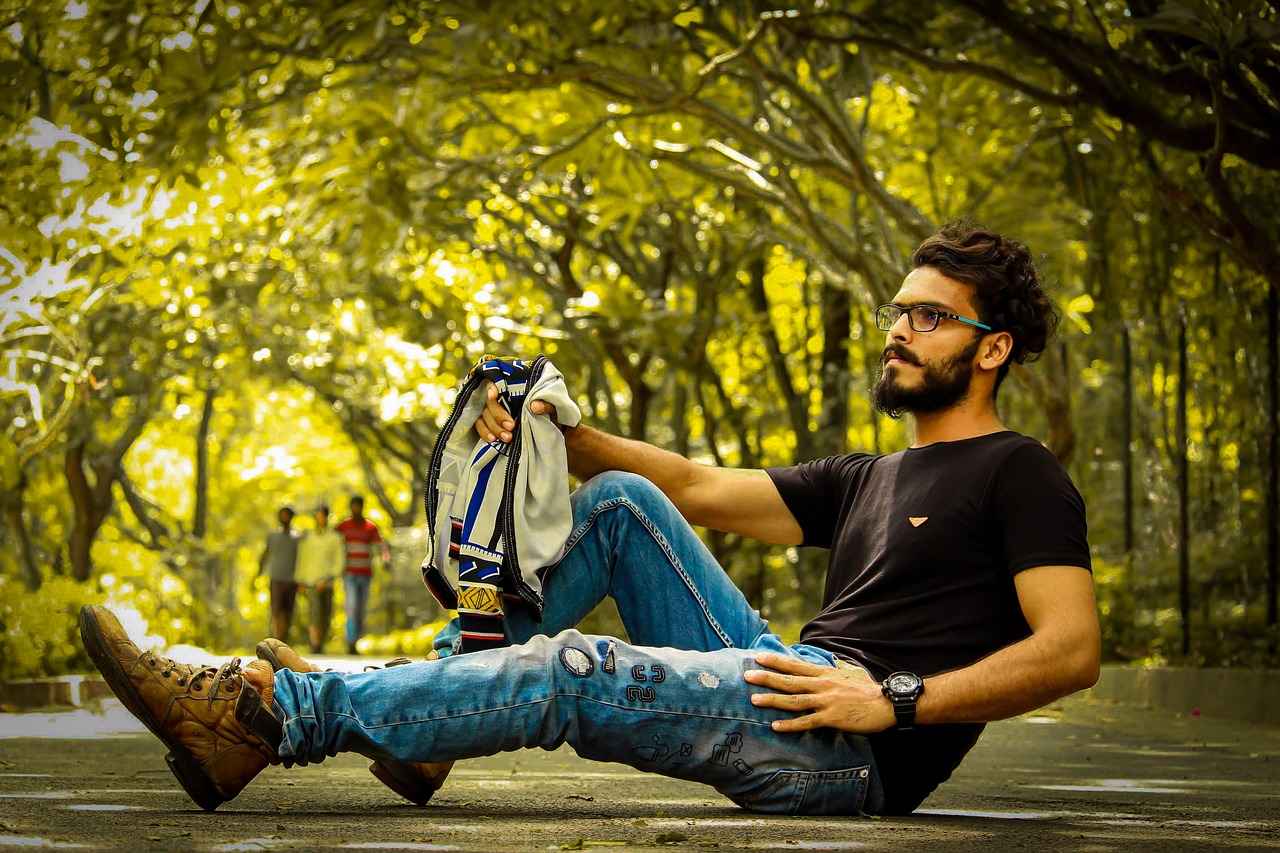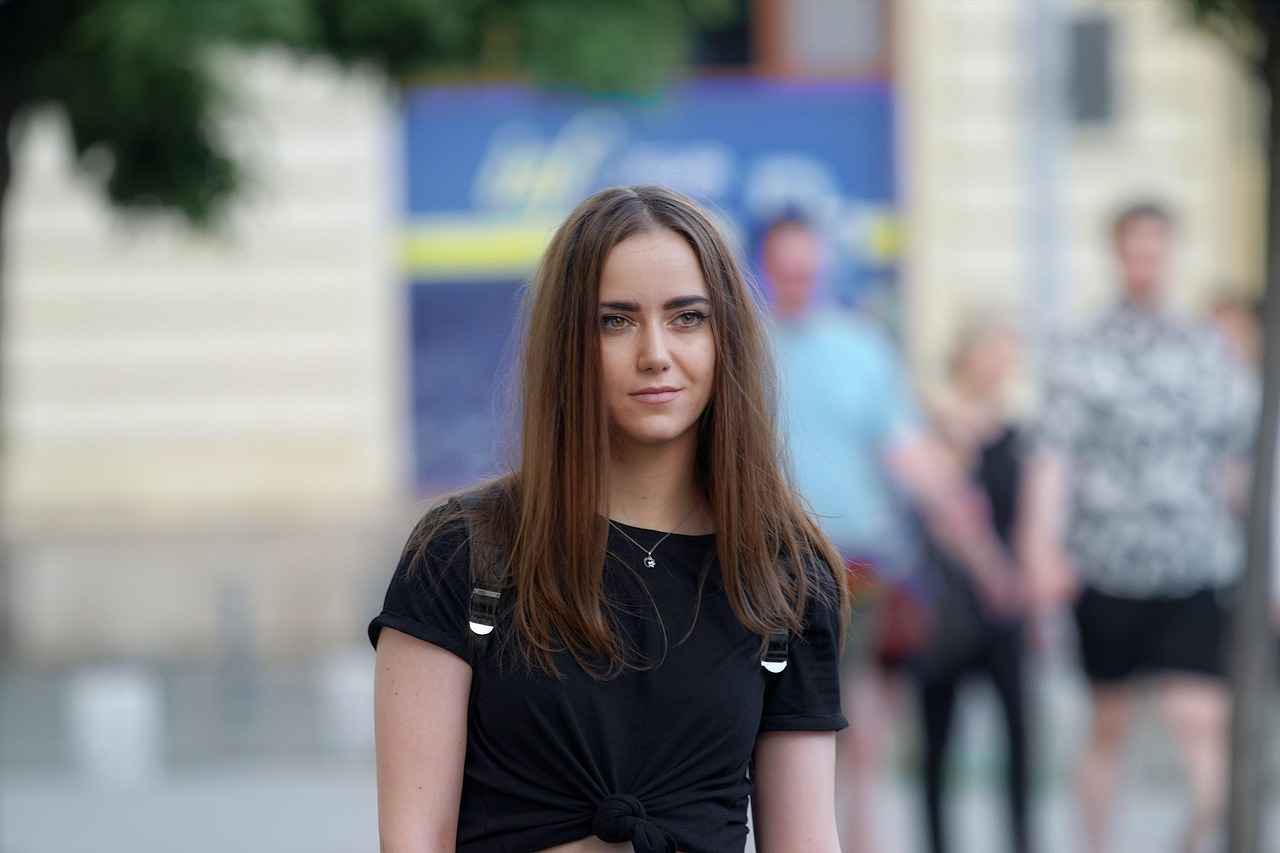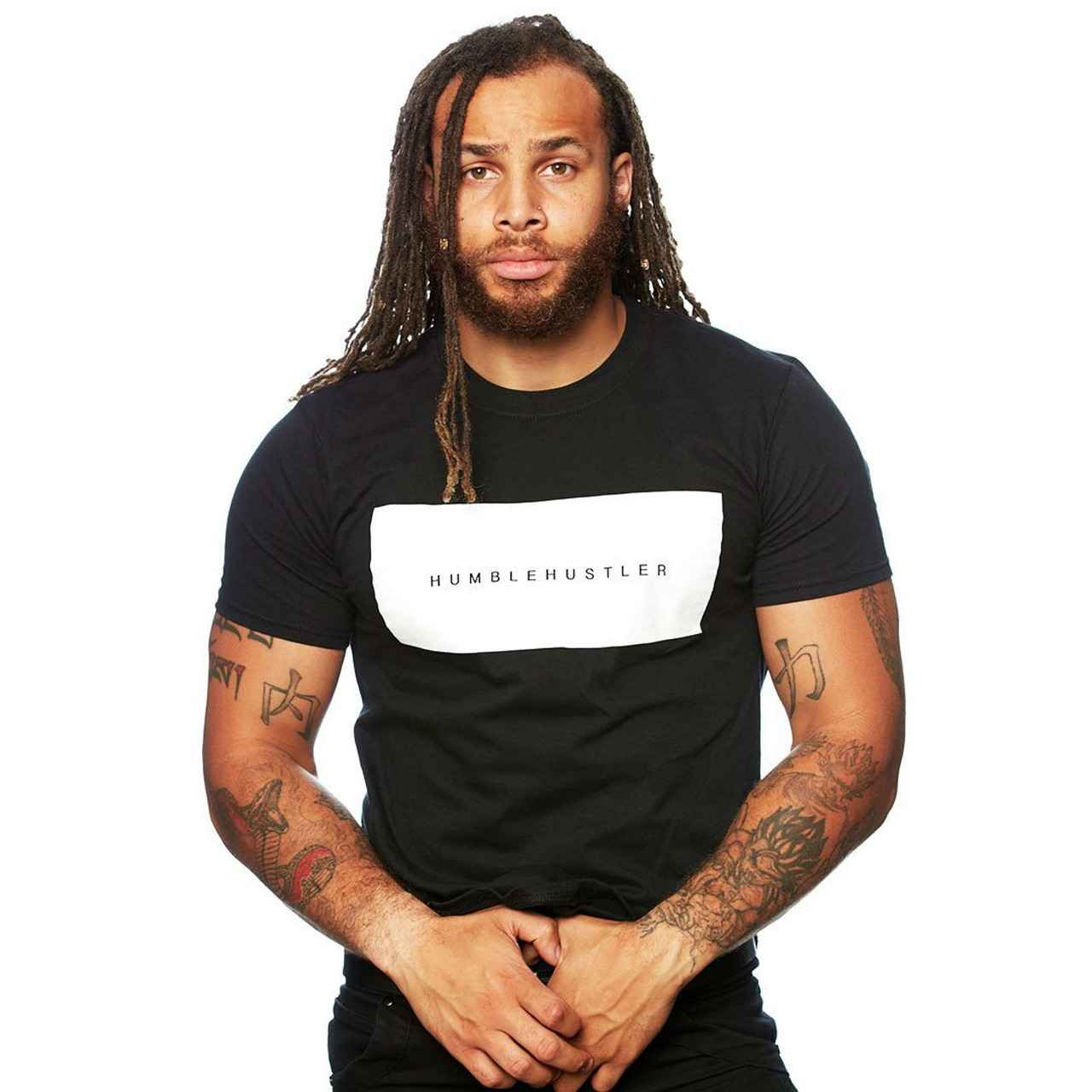This article delves into effective strategies for designing custom t-shirts, offering insights into the design process, material selection, and tips for creating a memorable and cohesive look for your team or event.
The Importance of Custom T-Shirts
Custom t-shirts serve as a powerful tool for team unity and branding. They foster a sense of belonging and can enhance visibility for your group or event. Wearing matching t-shirts can create a unified appearance, making your team easily recognizable during events or gatherings.
Choosing the Right Fabric
Selecting the appropriate fabric is crucial for comfort and durability. Different materials offer various benefits that impact the overall look and feel of your custom t-shirts.
- Cotton vs. Polyester
- Benefits of Cotton: Cotton is breathable and soft, making it a popular choice for casual wear. It’s ideal for comfort but may not be as durable as synthetic options.
- Benefits of Polyester: Polyester is known for its durability and moisture-wicking properties, making it suitable for active environments. It holds color well and resists wrinkles.
- Blended Fabrics: Blended fabrics combine the best of both worlds, offering comfort and durability, making them a great choice for team t-shirts that require versatility.
Design Elements to Consider
When designing custom t-shirts, consider elements like color, graphics, and typography. Each component plays a vital role in conveying your message and brand identity.
- Color Psychology: Colors evoke emotions and can influence perceptions. Understanding color psychology can help you select hues that align with your team’s values and mission.
- Graphic Design Basics: Effective graphic design enhances your t-shirt’s visual appeal. Familiarizing yourself with design principles can elevate your custom t-shirt project.
Incorporating Team Branding
Integrating your team’s branding into the t-shirt design is essential for creating a cohesive look. This includes logos, slogans, and color schemes that represent your group.
- Logo Placement: Strategically placing your logo can maximize visibility and impact. Consider common placements such as the chest area or back of the t-shirt.
- Using Slogans Effectively: A catchy slogan can enhance your t-shirt design. It should be concise and resonate with your audience, reinforcing team spirit and purpose.
Printing Techniques Explained
Understanding different printing techniques is crucial for achieving the best results in your custom t-shirt designs. Each method has its advantages and limitations.
- Screen Printing: Known for its durability and vibrant colors, screen printing is ideal for bulk orders but requires setup time and costs.
- Direct-to-Garment (DTG) Printing: DTG allows for detailed designs and is suitable for smaller orders. It offers a wide color range but may not be as durable as screen printing.
Budgeting for Custom T-Shirts
Setting a budget for your custom t-shirt project is essential. Consider costs for materials, printing, and design to ensure you stay within your financial limits.
- Cost-Effective Options: Exploring cost-effective options can help you achieve quality without overspending. Look for bulk discounts or local printers with competitive pricing.
- Balancing Quality and Cost: It’s important to find a balance between quality and cost. Investing in better materials or printing methods can lead to a more satisfactory final product.
Finalizing Your Design
Once you’ve gathered all elements, it’s time to finalize your custom t-shirt design. This includes reviewing all components for coherence and appeal.
- Soliciting Feedback: Getting feedback from team members can provide valuable insights and ensure everyone feels represented in the final design.
- Proofing Before Printing: Always proof your design before printing to catch any errors. This step is crucial for ensuring that your t-shirts meet your expectations.
Conclusion: Making Your Custom T-Shirt Vision a Reality
Designing custom t-shirts for your team or event can be a rewarding experience. By following these guidelines, you can create memorable apparel that fosters unity and showcases your group’s identity.
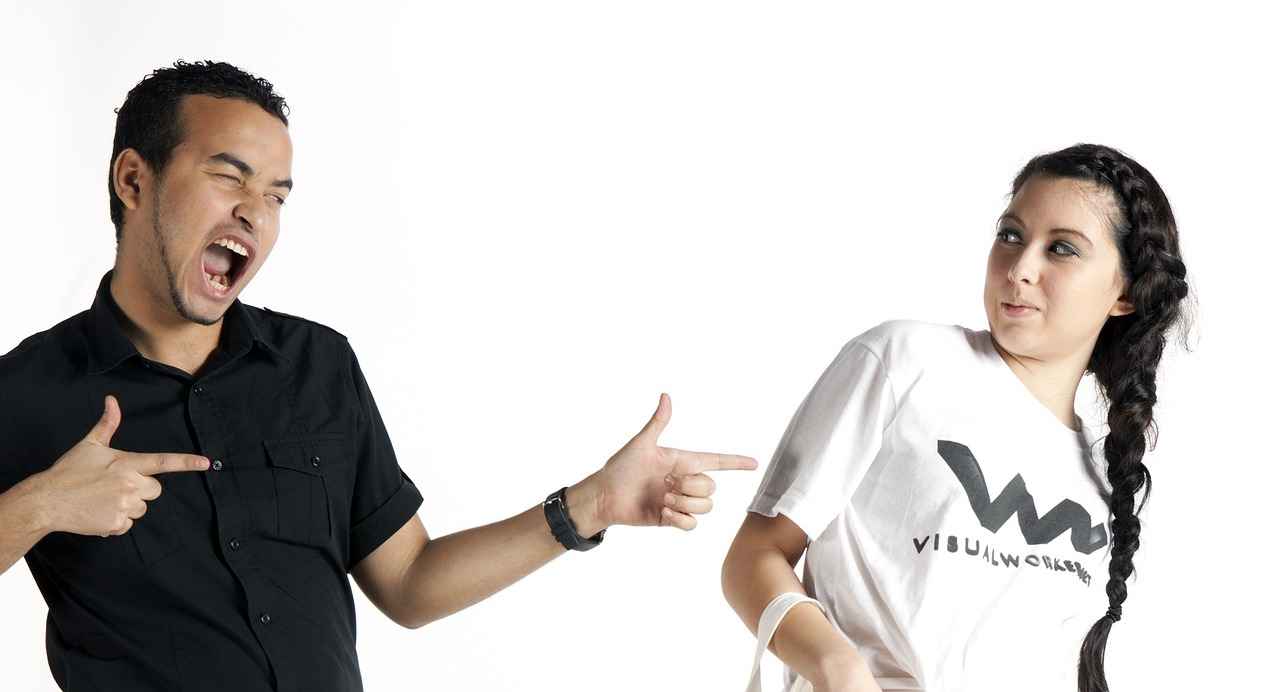
The Importance of Custom T-Shirts
Custom t-shirts are more than just clothing; they are a symbol of unity and a powerful means of branding for teams, organizations, and events. When designed thoughtfully, these t-shirts can create a strong sense of belonging among members, making everyone feel like an integral part of the group. This article delves into the significance of custom t-shirts and how they can enhance visibility and team spirit.
Custom t-shirts serve as a powerful tool for team unity and branding. They foster a sense of belonging and can enhance visibility for your group or event. When team members wear matching shirts, it creates a visual identity that is easily recognizable. This not only promotes team spirit but also helps in building a cohesive atmosphere, especially during events or competitions.
Moreover, custom t-shirts act as a walking advertisement for your brand or cause. Every time a team member wears the shirt, they are promoting your message to the public, increasing awareness and interest. This can be particularly beneficial for charitable events, sports teams, or corporate gatherings, where visibility and branding are crucial.
- Fostering Team Spirit: Wearing the same attire can enhance camaraderie among team members.
- Building Identity: Custom t-shirts can reflect the values and mission of the group, reinforcing a shared identity.
- Encouraging Participation: When members feel connected through their attire, they are more likely to engage actively in activities.
In conclusion, custom t-shirts are an essential element for any team or group event. They not only promote unity and belonging but also serve as a powerful branding tool. By investing in quality custom t-shirts, you can enhance your group’s visibility and create lasting memories.

Choosing the Right Fabric
is essential for creating custom t-shirts that are not only visually appealing but also comfortable and durable. The fabric you select can significantly influence the overall experience of wearing the t-shirt, making it crucial to understand the various options available.
When it comes to fabrics, there are several factors to consider, including breathability, durability, and care requirements. Each material has its unique properties that can enhance or detract from the final product.
- Cotton: A natural fiber known for its softness and breathability. Cotton t-shirts are comfortable for everyday wear and are great for casual events. However, they may shrink or fade over time.
- Polyester: A synthetic fabric that is highly durable and resistant to wrinkles and shrinking. Polyester is excellent for active wear, as it wicks moisture away from the body, keeping you cool and dry.
- Blended Fabrics: Combining cotton and polyester can offer the best of both worlds. These blends provide comfort while enhancing durability and reducing maintenance needs.
Additionally, consider the weight of the fabric. Lightweight fabrics are perfect for warm climates, while heavier options offer more warmth and structure, making them suitable for cooler weather.
Ultimately, the choice of fabric should align with the intended use of the t-shirts. For instance, if the t-shirts are for a sports team, opting for moisture-wicking polyester or a cotton-polyester blend may be ideal. On the other hand, for a casual gathering, pure cotton could provide the comfort and style desired.
In conclusion, understanding the different fabrics available can greatly enhance your custom t-shirt design process. By selecting the right material, you ensure that your team or group event is represented with style, comfort, and durability.
Cotton vs. Polyester
Understanding the differences between cotton and polyester is essential when selecting the ideal fabric for your custom t-shirts. Each material has unique properties that cater to different needs, preferences, and uses. This article will delve into the characteristics of cotton and polyester, helping you make an informed choice based on comfort, durability, and your specific requirements.
| Fabric Type | Comfort | Durability | Moisture-Wicking | Color Retention |
|---|---|---|---|---|
| Cotton | Soft and breathable | Less durable than polyester | Poor moisture-wicking | Fades over time |
| Polyester | Less soft, but comfortable | Highly durable | Excellent moisture-wicking | Holds color well |
Cotton is a natural fiber known for its softness and breathability. It is often favored for casual wear and is ideal for those who prioritize comfort. However, cotton may not withstand the rigors of intense activities as well as polyester, leading to wear and tear over time.
On the other hand, polyester is a synthetic fiber renowned for its durability and moisture-wicking capabilities. This makes it an excellent choice for activewear, as it keeps the wearer dry and comfortable during physical activities. Additionally, polyester fabrics are less prone to wrinkling and fading, ensuring that your custom t-shirts maintain their vibrant appearance.
In summary, choosing between cotton and polyester ultimately depends on the intended use of your t-shirts. If comfort and breathability are your top priorities, cotton is the way to go. However, if you require durability and moisture management, polyester is the better option. By understanding these differences, you can select the fabric that best aligns with your needs and preferences.
Benefits of Cotton
Cotton is a widely favored fabric in the world of apparel, particularly for casual wear. Its breathable and soft nature makes it an ideal choice for those seeking comfort in their clothing. When you wear cotton, you experience a gentle touch against your skin, which is especially appreciated during warmer months.
One of the most significant advantages of cotton is its moisture-absorbing properties. This means it can effectively wick away sweat, keeping you cool and dry even in hot conditions. For individuals who prioritize comfort during outdoor activities or casual gatherings, cotton t-shirts provide a sense of ease that synthetic fabrics often lack.
However, it’s essential to consider that while cotton offers excellent comfort, it may not be as durable as some synthetic alternatives. Cotton fabrics can wear out more quickly with frequent washing and heavy use, which might not be ideal for active environments or rigorous activities. Therefore, understanding the intended use of your custom t-shirts is crucial when choosing materials.
Another point worth noting is that cotton is biodegradable and more environmentally friendly compared to synthetic fibers. This aspect appeals to environmentally conscious consumers who wish to make sustainable choices in their clothing purchases.
In summary, while cotton is an excellent choice for casual wear due to its breathability and softness, it is essential to weigh its comfort against its durability. For those looking for a blend of both worlds, exploring blended fabrics may provide the best solution for custom t-shirts that require both comfort and longevity.
Benefits of Polyester
Polyester is a synthetic fabric that has gained immense popularity in various industries due to its remarkable properties. This article delves into the numerous advantages of polyester, particularly in the context of custom t-shirt design for teams and events.
- Durability: Polyester is known for its exceptional strength and durability. Unlike natural fibers, polyester can withstand wear and tear, making it ideal for active environments such as sports events or outdoor gatherings.
- Moisture-Wicking Properties: One of the standout features of polyester is its ability to wick moisture away from the body. This property keeps wearers cool and dry, enhancing comfort during physical activities.
- Color Retention: Polyester holds color exceptionally well, ensuring that custom designs remain vibrant and eye-catching even after multiple washes. This quality is crucial for maintaining the visual appeal of team apparel.
- Wrinkle Resistance: Polyester is inherently wrinkle-resistant, allowing garments to maintain a fresh appearance without the need for ironing. This feature is particularly beneficial for busy teams that require low-maintenance outfits.
- Quick Drying: The quick-drying nature of polyester makes it a preferred choice for athletes and outdoor enthusiasts. It dries faster than cotton, providing comfort during intense activities.
- Affordability: Polyester is often more affordable than natural fibers, making it a cost-effective option for teams looking to order custom t-shirts in bulk.
In conclusion, polyester offers a multitude of benefits that make it an excellent choice for custom t-shirts. Its durability, moisture-wicking properties, and resistance to wrinkles and fading ensure that teams not only look great but also feel comfortable during their events. When designing custom apparel, considering polyester as a fabric option can lead to a more satisfying and practical outcome.
Blended Fabrics
are an innovative solution in the world of textiles, merging the advantages of different materials to create a superior product. These fabrics typically combine natural fibers like cotton with synthetic fibers such as polyester, resulting in a textile that is both comfortable and durable. This combination makes blended fabrics an ideal choice for custom team t-shirts, as they cater to various needs and preferences.
One of the primary benefits of blended fabrics is their versatility. Whether your team is participating in an outdoor event, engaging in sports, or simply looking for casual wear, these fabrics can adapt to different situations. They offer the breathability of cotton while incorporating the strength and moisture-wicking properties of polyester, ensuring that wearers remain comfortable and dry.
Moreover, blended fabrics are known for their color retention. Unlike pure cotton, which can fade over time, blends tend to hold their colors better, ensuring that your team t-shirts maintain their vibrant appearance even after multiple washes. This quality is particularly important for teams that want to showcase their identity through striking graphics and logos.
Additionally, blended fabrics are often wrinkle-resistant, making them easy to care for and ideal for busy team members who may not have time for extensive laundry routines. This feature ensures that your team looks polished and professional at all times, promoting a positive image during events.
In conclusion, choosing blended fabrics for your team t-shirts not only enhances comfort and durability but also allows for a diverse range of styles and designs. By opting for these versatile materials, you can create t-shirts that are not only functional but also visually appealing, making them a perfect choice for any team or group event.
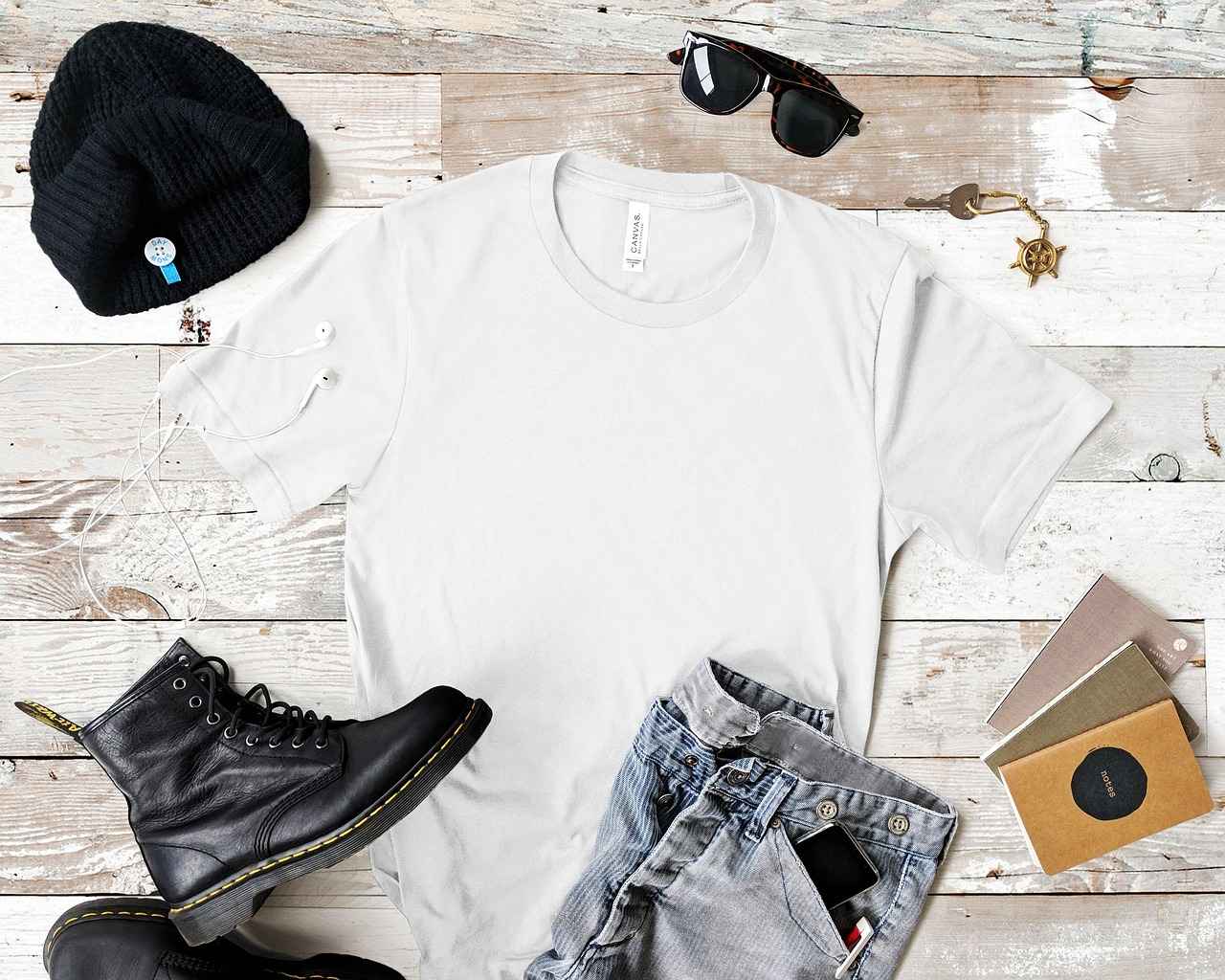
Design Elements to Consider
Designing custom t-shirts is an exciting way to express your team’s identity or promote an event. When embarking on this creative journey, it’s essential to consider various design elements that will enhance your t-shirt’s appeal and effectiveness. Below, we explore key components such as color, graphics, and typography, all of which play a significant role in conveying your message and brand identity.
Color is one of the most powerful tools in design. It can evoke emotions, convey messages, and even influence behavior. When selecting colors for your custom t-shirts, consider the following:
- Brand Alignment: Choose colors that reflect your brand’s personality and values.
- Contrast: Ensure that the text and graphics stand out against the shirt color for better visibility.
- Cultural Significance: Be aware of cultural meanings associated with specific colors, as they can vary widely.
Graphics are crucial for making your t-shirt design memorable. They can range from logos to intricate illustrations. Here are some tips:
- Simplicity: A simple graphic is often more impactful than a complex one. Aim for clarity.
- Relevance: Ensure that the graphics align with your message or theme.
- Quality: Use high-resolution images to ensure clarity and professionalism in printing.
The choice of font can significantly impact how your message is perceived. When selecting typography, consider these factors:
- Readability: Choose fonts that are easy to read from a distance.
- Style: The font style should complement the overall design and reflect your brand’s character.
- Hierarchy: Use different font sizes and weights to create a visual hierarchy, guiding the viewer’s eye through the design.
In conclusion, the design elements of color, graphics, and typography are essential for creating custom t-shirts that effectively communicate your team’s message and identity. By carefully considering these aspects, you can craft a design that not only looks great but also resonates with your audience.
Color Psychology
is a fascinating field that explores how colors influence our emotions, perceptions, and behaviors. The colors we encounter daily can evoke a wide range of feelings, from joy and excitement to calmness and serenity. Understanding these effects can be particularly beneficial when designing custom t-shirts for teams or events, as the right hues can effectively communicate your group’s values and mission.
When selecting colors for your custom t-shirts, it’s essential to consider the emotional associations that different colors carry. For instance:
- Red: Often associated with energy, passion, and action. It can stimulate excitement and draw attention.
- Blue: Represents trust, loyalty, and calmness. It’s a popular choice for corporate branding.
- Green: Symbolizes nature, growth, and tranquility. It can evoke feelings of peace and balance.
- Yellow: Associated with happiness and optimism. It can brighten up designs but should be used sparingly to avoid overwhelming the viewer.
- Purple: Often linked to creativity and luxury. It can add a touch of elegance to your design.
Understanding these associations allows you to choose colors that resonate with your team’s identity. For example, if your group values innovation and creativity, incorporating shades of purple and blue might enhance your message. Alternatively, if your focus is on energy and enthusiasm, vibrant reds and yellows may be more appropriate.
Moreover, consider the context in which your t-shirts will be worn. Are they for a sports event, a corporate gathering, or a community service project? Each scenario may call for different color palettes to convey the right tone and atmosphere.
Ultimately, incorporating color psychology into your t-shirt design can significantly impact how your message is received. By aligning your color choices with your team’s values, you can create a more cohesive and impactful visual identity that resonates with both team members and the audience.
In conclusion, understanding color psychology is not just about aesthetics; it’s a strategic approach to design that can enhance your team’s unity and visibility. By carefully selecting colors that reflect your mission, you can foster a sense of belonging and pride among your team members.
Graphic Design Basics
Graphic design plays a critical role in how your custom t-shirts are perceived. Understanding the foundational principles of graphic design can significantly enhance the visual appeal of your apparel. In this section, we will explore essential graphic design basics that can elevate your custom t-shirt project.
- Balance: Achieving a visual balance in your design ensures that elements are distributed evenly, creating a harmonious look. This can be symmetrical or asymmetrical, depending on the desired effect.
- Contrast: Utilizing contrast effectively can make your design pop. This involves using opposing colors, shapes, or sizes to draw attention to key elements like logos or slogans.
- Alignment: Proper alignment of text and graphics is crucial for a clean and professional appearance. Ensure that all elements are aligned to guide the viewer’s eye through the design.
- Repetition: Consistency is key in design. Repeating certain elements, such as colors or shapes, can create a cohesive look that reinforces your brand identity.
- White Space: Also known as negative space, white space is the area around your design elements. It helps to avoid clutter and enhances readability, making your message clear.
When designing your custom t-shirts, consider these principles as they will help in creating a design that not only looks good but also effectively communicates your team’s message. By familiarizing yourself with these graphic design fundamentals, you can ensure that your t-shirt stands out and resonates with your audience.
In conclusion, effective graphic design is not just about aesthetics; it is about creating a visual language that speaks to your audience. By applying these basic principles, you can elevate your custom t-shirt project to new heights, making it a memorable representation of your team or event.

Incorporating Team Branding
into your custom t-shirt design is a crucial step in establishing a unified and professional appearance for your group. It goes beyond merely adding a logo; it encompasses the entire visual identity of your team. This includes a thoughtful selection of color schemes, slogans, and other branding elements that resonate with your team’s values and mission.
To create a cohesive look, start by identifying your team’s brand elements. Here are some key components to consider:
- Logos: Your logo is the face of your brand. Ensure it is prominently displayed on the t-shirt. Common placements include the chest area, sleeves, or back. The size and visibility of the logo should be balanced with other design elements to avoid a cluttered look.
- Slogans: A well-crafted slogan can encapsulate your team’s spirit. Choose a phrase that is not only catchy but also meaningful. It should reflect your team’s mission or values and be easy to read from a distance.
- Color Schemes: Colors play a pivotal role in branding. Select colors that align with your team’s identity and evoke the desired emotions. For example, blue often represents trust and reliability, while red can signify passion and energy. Ensure that the colors used in the t-shirt design are consistent with your other branding materials.
When integrating these elements, consistency is key. All components should work harmoniously together to create a unified look that represents your team effectively. This not only enhances your visibility at events but also fosters a sense of belonging among team members.
In conclusion, incorporating your team’s branding into your t-shirt design is essential for promoting unity and identity. By thoughtfully combining logos, slogans, and color schemes, you can create a memorable and impactful representation of your group that resonates with both team members and the audience.
Logo Placement
is a crucial aspect of custom t-shirt design that can significantly enhance your brand’s visibility and impact. When creating t-shirts for your team or event, the way you position your logo can make all the difference in how it is perceived by onlookers. Here are some key considerations for effective logo placement:
- Chest Area: Placing your logo on the chest area is a classic choice that ensures maximum visibility. This placement is easily noticeable and makes a strong statement about your brand.
- Back of the T-Shirt: The back of the t-shirt offers a larger canvas for your logo, making it an excellent option for showcasing more intricate designs or additional branding elements.
- Sleeve Placement: For a unique touch, consider placing your logo on the sleeves. This subtle yet effective placement can give your t-shirt a modern and stylish look.
- Bottom Hem: While less common, placing your logo near the bottom hem can create an understated yet classy appearance. This is ideal for more sophisticated designs.
When deciding on the placement of your logo, consider the audience and the purpose of the t-shirt. For events like sports tournaments or community gatherings, prominent logo placement can enhance team spirit and visibility. In contrast, for corporate events, a more subtle approach may be appropriate.
Additionally, think about the size and color of your logo. A larger logo may be more eye-catching, while a smaller logo can convey elegance. Ensure that the colors contrast well with the t-shirt fabric to maintain clarity and impact.
Ultimately, the right logo placement can transform a simple t-shirt into a powerful branding tool that resonates with your audience and reinforces your team’s identity. By thoughtfully considering where to place your logo, you can maximize its visibility and create a lasting impression.
Using Slogans Effectively
A well-crafted slogan can significantly elevate your custom t-shirt design, making it more memorable and impactful. A slogan should be concise, engaging, and resonate deeply with your target audience. It acts as a rallying cry, reinforcing team spirit and the purpose behind your event or group.
Here are some key strategies for creating effective slogans:
- Keep It Short and Sweet: Aim for brevity. A slogan should be easily remembered and quickly understood, ideally no more than a few words.
- Reflect Your Team’s Identity: Your slogan should encapsulate the essence of your team or event. Consider the values, mission, and culture of your group when brainstorming ideas.
- Inspire Action or Emotion: A great slogan can inspire action or evoke emotion. Use words that motivate and resonate with your audience, urging them to feel connected to the cause.
- Make It Unique: Stand out from the crowd by crafting a slogan that is distinctive. Avoid clichés and strive for originality to ensure your message is memorable.
- Test Your Slogan: Before finalizing, gather feedback from team members. A diverse perspective can help refine your slogan, ensuring it hits the mark.
Incorporating your slogan into the overall design of your t-shirt is crucial. It should be prominently displayed, complementing the graphics and colors chosen. This integration reinforces the message and enhances the visual appeal of your t-shirt design.
Ultimately, a catchy slogan not only enhances your t-shirt design but also strengthens the bond among team members, fostering a sense of unity and shared purpose. By following these guidelines, you can create a slogan that truly represents your team and makes a lasting impression.

Printing Techniques Explained
Understanding the various printing techniques is essential for achieving the best results in your custom t-shirt designs. Each method comes with its own set of advantages and limitations, making it crucial to select the right one based on your specific needs.
When it comes to printing custom t-shirts, the choice of technique can significantly affect the final product’s quality, durability, and overall appearance. Below are some of the most popular methods:
- Screen Printing: This method is well-known for its durability and vibrant colors. It is particularly effective for bulk orders, as it allows for high-quality prints at a lower cost per item. However, it requires setup time and can be less cost-effective for smaller runs.
- Direct-to-Garment (DTG) Printing: DTG printing is a more modern approach that allows for detailed designs and a wide range of colors. It is ideal for smaller orders or designs with many colors, but it may not be as durable as screen printing, especially after multiple washes.
- Heat Transfer Printing: This technique involves printing a design onto a special transfer paper, which is then applied to the t-shirt using heat and pressure. It is versatile and can produce high-quality images, but may not hold up as well over time compared to other methods.
- Sublimation Printing: Sublimation is a process that uses heat to transfer dye onto materials, typically polyester. This method allows for vibrant prints that are embedded into the fabric, making them resistant to fading and cracking. However, it is limited to light-colored fabrics.
In conclusion, selecting the right printing technique is crucial for the success of your custom t-shirt project. By understanding the strengths and weaknesses of each method, you can make an informed decision that aligns with your design goals and budget.
Screen Printing
is a widely recognized technique in the world of custom apparel, particularly for t-shirts. Known for its vibrant colors and impressive durability, screen printing remains a favored choice among businesses and organizations looking to create a lasting impression. This method is particularly advantageous for bulk orders, allowing for consistent and high-quality designs across numerous garments.
One of the key benefits of screen printing is its ability to produce rich colors that are resistant to fading, even after multiple washes. This durability is attributed to the use of specialized inks that bond well with the fabric. Unlike other printing methods, screen printing allows for the application of multiple layers of ink, which enhances the overall visual appeal of the printed design.
However, it is important to note that screen printing does come with some initial setup costs and time requirements. The process involves creating a separate screen for each color in the design, which can be time-consuming, especially for intricate graphics. This setup can lead to higher costs for smaller orders, making it less economical for those looking to print just a few shirts.
Despite these challenges, screen printing is often the preferred choice for larger quantities due to its cost-effectiveness in bulk production. Organizations planning events, sports teams, or promotional campaigns frequently turn to this method to ensure their apparel not only looks great but also stands the test of time.
In conclusion, while screen printing may require a significant upfront investment in terms of time and resources, its long-lasting quality and vibrant output make it a worthwhile option for those seeking to create custom t-shirts that resonate with their audience.
Direct-to-Garment (DTG) Printing
has revolutionized the world of custom apparel, particularly in the realm of t-shirt design. This innovative printing technique allows for intricate and detailed designs that can be applied directly onto fabric. As a result, it is an excellent choice for individuals or organizations looking to create unique garments with vibrant colors and complex graphics.
One of the most significant advantages of DTG printing is its ability to handle smaller orders efficiently. Unlike traditional screen printing, which often requires a minimum quantity to justify setup costs, DTG can produce single items or small batches without sacrificing quality. This makes it ideal for events such as family reunions, small team sports, or promotional giveaways.
Moreover, DTG printing offers a wide color range, allowing designers to explore various hues and gradients that may not be achievable with other methods. This flexibility enables the creation of stunning visuals that can capture the essence of your design concept. However, it’s important to note that while DTG printing excels in detail and color variety, it may not be as durable as screen printing. The prints can fade over time, especially if not cared for properly, which is an essential consideration for long-term use.
When choosing DTG printing for your custom t-shirts, it’s crucial to select high-quality fabrics that complement the printing process. Cotton or cotton-blend materials typically yield the best results, ensuring that the vibrant colors stand out and the details remain sharp.
In conclusion, DTG printing is an excellent option for those seeking to create custom t-shirts with intricate designs and vibrant colors. While it may not offer the same durability as screen printing, its ability to accommodate smaller orders and provide detailed prints makes it a popular choice for many occasions.
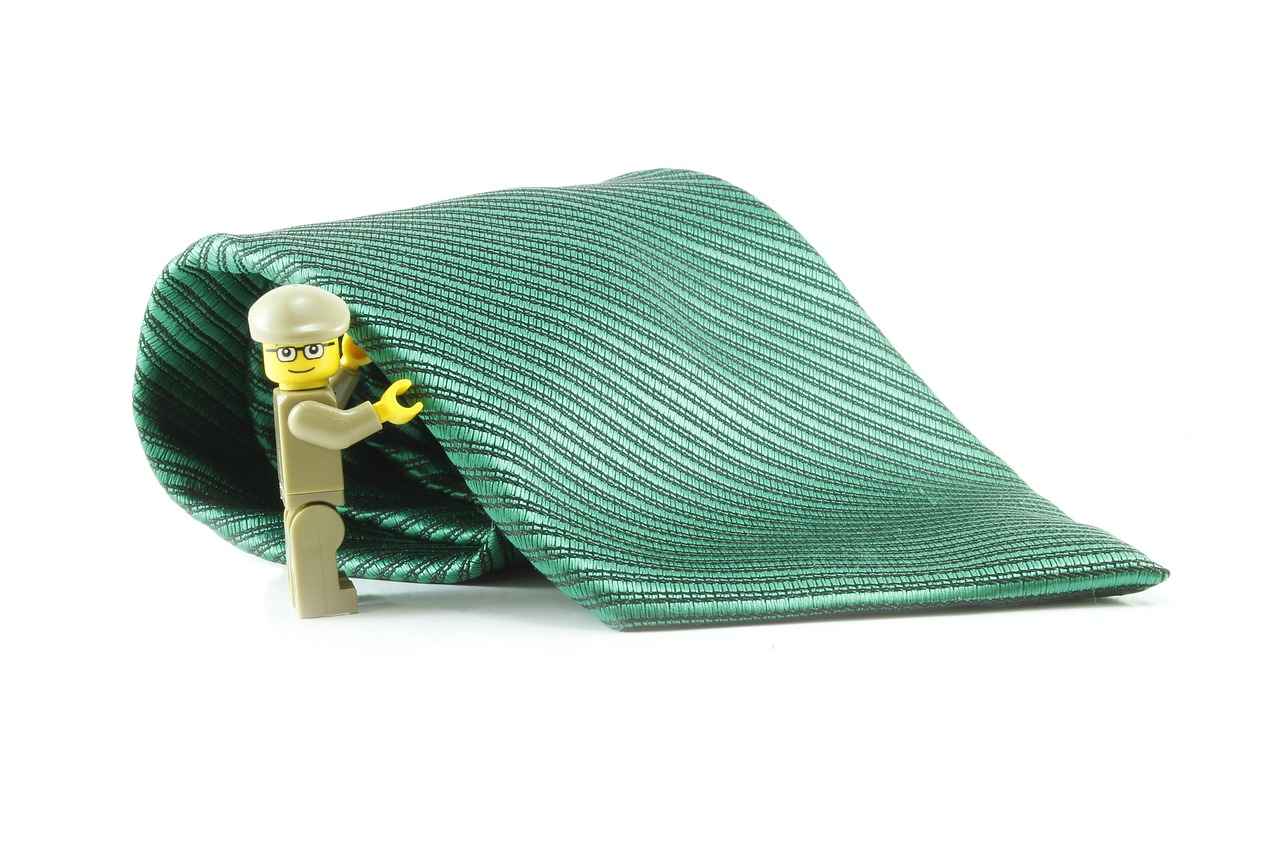
Budgeting for Custom T-Shirts
is a critical step in ensuring the success of your project. When embarking on a custom t-shirt design journey, it is vital to establish a clear financial plan to avoid unexpected expenses. Here, we will delve into the various factors that contribute to the overall cost of your custom t-shirt project.
First and foremost, consider the cost of materials. The choice of fabric can significantly impact your budget. High-quality materials may come at a premium, but they often result in a more comfortable and durable product. Common options include:
- Cotton: Soft and breathable, ideal for casual wear.
- Polyester: Durable and moisture-wicking, perfect for active use.
- Blends: Combining the best of both worlds for versatility.
Next, account for printing costs. Different printing techniques, such as screen printing or direct-to-garment (DTG), come with varying price points. Screen printing is typically more cost-effective for bulk orders, while DTG allows for intricate designs but may be pricier for larger quantities.
Design costs should also be factored into your budget. If you’re hiring a professional designer, their fees can vary based on experience and complexity of the design. Alternatively, utilizing user-friendly design software can help you save on costs while still achieving a professional look.
Another important aspect is to explore cost-effective options. Look for local printers that offer competitive pricing or consider purchasing in bulk to take advantage of discounts. Balancing quality with cost is essential; investing in better materials may lead to a more satisfactory final product, enhancing your team’s image and cohesion.
In conclusion, setting a budget for your custom t-shirt project requires careful consideration of materials, printing methods, and design costs. By planning ahead and exploring various options, you can create high-quality t-shirts that meet your needs without exceeding your financial limits.
Cost-Effective Options
are essential for anyone looking to create custom t-shirts without breaking the bank. By exploring various strategies, you can achieve high-quality results while managing your budget effectively.
One of the most effective ways to save money is to look for bulk discounts. Many printing companies offer significant price reductions when you order larger quantities. This not only lowers the cost per shirt but also ensures that you have enough apparel for your entire team or event. It’s worth reaching out to different suppliers to compare their bulk pricing options and find the best deal.
Additionally, consider working with local printers. They often have competitive pricing and can provide personalized service that larger companies may lack. Supporting local businesses can also foster community relationships, which is an added bonus. Don’t hesitate to ask about any ongoing promotions or special deals that could further reduce your costs.
Another strategy is to utilize online platforms that specialize in custom apparel. Many of these websites offer user-friendly design tools and transparent pricing structures. You can easily experiment with different designs and materials to find the perfect balance between quality and cost. Furthermore, some platforms provide free shipping on larger orders, which can contribute to overall savings.
Lastly, remember to prioritize your design elements. Simple designs often cost less to produce than intricate ones. By focusing on essential graphics and text, you can keep production costs down while still creating a visually appealing product. This approach not only saves money but also ensures that your message remains clear and impactful.
In conclusion, exploring cost-effective options is vital for achieving quality custom t-shirts without overspending. By leveraging bulk discounts, local printers, online platforms, and thoughtful design choices, you can create an impressive product that meets your team’s needs and budget.
Balancing Quality and Cost
is a crucial aspect of any project, especially when it comes to designing custom t-shirts for teams or events. Striking the right balance can significantly influence both the outcome and the overall satisfaction of the final product.
When embarking on a custom t-shirt project, it’s essential to consider how quality and cost interact. While it may be tempting to opt for the cheapest materials or printing methods available, this can often lead to a disappointing product that fails to meet expectations. Instead, investing in better materials or superior printing techniques can enhance the overall quality and longevity of the t-shirts, ultimately resulting in a more satisfactory final product.
- Material Selection: Choosing high-quality fabrics can improve comfort and durability, making the t-shirts more enjoyable to wear. Cotton, for instance, is soft and breathable, whereas polyester offers moisture-wicking properties.
- Printing Techniques: Different printing methods, such as screen printing or direct-to-garment (DTG) printing, have varying costs and quality outcomes. Screen printing is often more durable, while DTG allows for intricate designs.
- Long-Term Value: Investing in quality may incur higher upfront costs, but it often pays off in the long run through enhanced durability and reduced need for replacements.
To effectively balance quality and cost, consider the following strategies:
1. Set a realistic budget that allows for quality materials.2. Compare multiple suppliers to find the best combination of price and quality.3. Seek recommendations from others who have experience with custom t-shirt projects.4. Don’t hesitate to ask for samples to evaluate the quality before placing a larger order.
In conclusion, finding the right balance between quality and cost is essential for achieving a successful custom t-shirt project. By prioritizing quality while remaining mindful of budget constraints, you can create t-shirts that not only look great but also stand the test of time, fostering team spirit and unity.
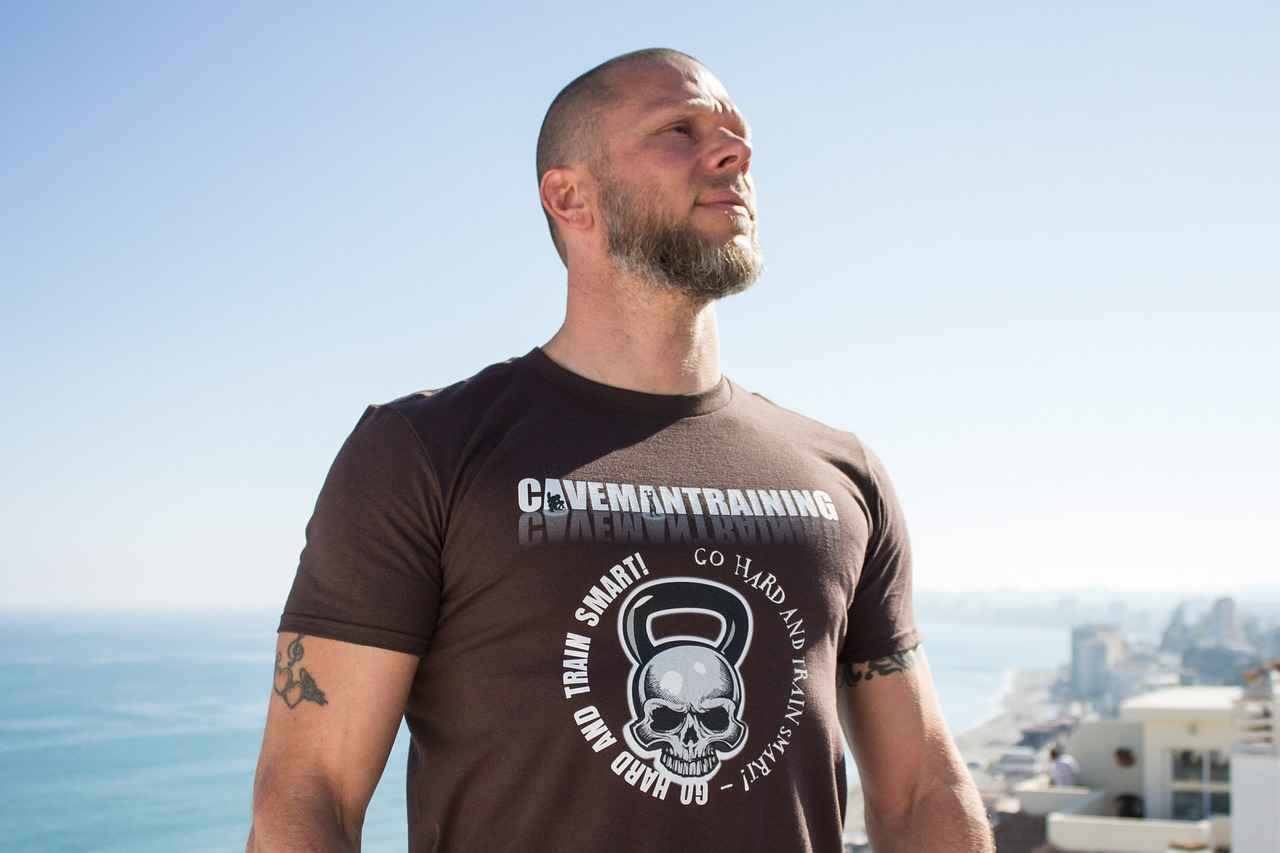
Finalizing Your Design
After you have meticulously gathered all the elements for your custom t-shirt, the next crucial step is to finalize your design. This process involves a thorough review of each component to ensure coherence and appeal. Here’s how you can effectively wrap up your design project:
- Review All Elements: Take a step back and analyze every part of your design. This includes the color scheme, graphics, typography, and any logos or slogans you plan to use. Ensure that they work harmoniously together to convey your intended message.
- Solicit Feedback: Involving your team or group in the finalization process can be immensely beneficial. Gather feedback on the design from team members to ensure everyone feels represented. This collaborative approach can also spark new ideas and improvements.
- Check for Consistency: Ensure that the design elements align with your team’s branding and values. Consistency in design not only enhances visual appeal but also strengthens brand recognition.
- Proof Your Design: Before moving to production, it’s essential to proof your design. Look for any typographical errors, misalignments, or color mismatches. This step is crucial for ensuring that the final product meets your expectations.
- Consider Printing Techniques: Different printing methods can affect how your design appears on the final product. Make sure that your design is suitable for the chosen printing technique, whether it’s screen printing, direct-to-garment, or another method.
Once you have reviewed and adjusted all elements, you can confidently proceed to the printing phase. A well-finished design not only reflects your team’s identity but also fosters unity and pride among members.
Soliciting Feedback
from team members is an essential step in the design process of custom t-shirts. Gathering insights from your team not only enriches the design but also ensures that every member feels included and represented. This collaborative approach can lead to a final product that resonates with the entire group.
When initiating the feedback process, it’s important to create an open environment where team members feel comfortable sharing their thoughts. Here are some effective strategies to consider:
- Organize a Brainstorming Session: Bring the team together for a brainstorming session where everyone can share their ideas and preferences. This can spark creativity and ensure diverse perspectives are considered.
- Use Surveys or Questionnaires: If your team is large or remote, consider using surveys to gather feedback. Ask specific questions about colors, designs, and slogans to get targeted insights.
- Visual Mockups: Present visual mockups of the t-shirt designs to the team. This helps members visualize the final product and provide more informed feedback.
- Incorporate a Voting System: After presenting different designs, allow team members to vote on their favorites. This democratic approach can help narrow down options and foster a sense of ownership.
- Follow Up: After gathering feedback, follow up with the team to discuss how their input will influence the final design. This shows that you value their opinions and encourages future participation.
Incorporating feedback not only improves the design but also enhances team morale. When individuals see their ideas reflected in the final product, it strengthens their connection to the group and promotes a sense of unity. Ultimately, soliciting feedback is a crucial step in the design journey, leading to a custom t-shirt that everyone can proudly wear.
Proofing Before Printing
is an essential step in the custom t-shirt design process that should never be overlooked. This phase involves meticulously reviewing your design to identify any potential errors or inconsistencies before the final print run. Failing to proof your design can lead to costly mistakes, such as misspelled text, incorrect colors, or misaligned graphics, which can ultimately compromise the quality of your t-shirts.
To ensure your design meets your expectations, consider the following important steps:
- Review Text Carefully: Always double-check any text included in your design. This includes not only the spelling but also the font size and style. A small typo can drastically alter the intended message.
- Check Color Accuracy: Colors may appear differently on screen compared to how they will print. Use a color guide to verify that the hues you’ve chosen will translate well onto fabric.
- Examine Design Placement: Make sure that all elements of your design are positioned correctly. This includes logos, graphics, and text. Visual balance is key to a professional appearance.
- Print a Sample: If possible, print a sample of your design on the intended fabric. This will give you a clear idea of how the final product will look and allow you to make any necessary adjustments.
In addition to these steps, it is wise to involve other team members in the proofing process. Fresh eyes can catch mistakes that you might have overlooked. Soliciting feedback can also foster a sense of collaboration and ensure that everyone feels represented in the final design.
Ultimately, taking the time to proof your design before printing is vital for achieving a final product that you and your team can be proud of. It not only saves time and resources but also enhances the overall quality of your custom t-shirts.

Conclusion: Making Your Custom T-Shirt Vision a Reality
Designing custom t-shirts for your team or event can be a rewarding experience that brings people together and creates a sense of belonging. By following some essential guidelines, you can create memorable apparel that not only fosters unity but also showcases your group’s unique identity. In this article, we will explore effective strategies for designing custom t-shirts, covering everything from material selection to design elements.
The Importance of Custom T-Shirts
Custom t-shirts are more than just clothing; they serve as a powerful tool for team branding and unity. Wearing matching shirts can enhance visibility at events and create a sense of camaraderie among team members.
Choosing the Right Fabric
Selecting the appropriate fabric is crucial for comfort and durability. Various materials offer different benefits:
- Cotton: Soft and breathable, ideal for casual wear.
- Polyester: Durable and moisture-wicking, perfect for active environments.
- Blended Fabrics: Combine the best of both worlds for versatility.
Design Elements to Consider
When designing custom t-shirts, consider the following elements:
- Color Psychology: Colors can evoke emotions and influence perceptions.
- Graphic Design Basics: Familiarizing yourself with design principles can enhance visual appeal.
Incorporating Team Branding
Integrating your team’s branding is essential for a cohesive look. This includes:
- Logo Placement: Strategically position your logo for maximum visibility.
- Using Slogans Effectively: A catchy slogan can reinforce team spirit.
Printing Techniques Explained
Understanding different printing techniques is crucial for achieving the best results:
- Screen Printing: Known for durability and vibrant colors.
- Direct-to-Garment (DTG) Printing: Allows for detailed designs, suitable for smaller orders.
Budgeting for Custom T-Shirts
Setting a budget is essential. Consider costs for materials, printing, and design to ensure you stay within your financial limits. Look for cost-effective options like bulk discounts to maximize your investment.
Finalizing Your Design
Once all elements are gathered, it’s time to finalize your design. Solicit feedback from team members to ensure everyone feels represented and proof your design to catch any errors before printing.
By following these guidelines, you can create custom t-shirts that not only look great but also promote a sense of unity and identity within your group. Whether for a sports team, a corporate event, or a community gathering, well-designed t-shirts can leave a lasting impression. Start your design journey today and watch your vision come to life!
Frequently Asked Questions
- What is the best fabric for custom t-shirts?
Choosing the right fabric depends on your needs! Cotton is soft and breathable, perfect for casual wear, while polyester is durable and moisture-wicking, ideal for active environments. Blended fabrics can offer a great combination of both.
- How can I make my t-shirt design stand out?
To make your design pop, focus on color psychology and effective graphic design. Use colors that resonate with your team’s values and ensure your graphics are visually appealing. Don’t forget to incorporate your logo and a catchy slogan!
- What printing technique should I choose?
It depends on your order size and design complexity! Screen printing is great for bulk orders with vibrant colors, while Direct-to-Garment (DTG) printing is perfect for smaller orders with detailed designs. Each method has its pros and cons!
- How can I keep my custom t-shirt project within budget?
Set a clear budget and explore cost-effective options like bulk discounts or local printers. Balancing quality and cost is key, so consider investing a little more in materials or printing methods for a better final product.
- Why is feedback important before finalizing my design?
Getting feedback from your team ensures everyone feels included and represented in the design. It can provide valuable insights and help you catch any potential issues before printing!








